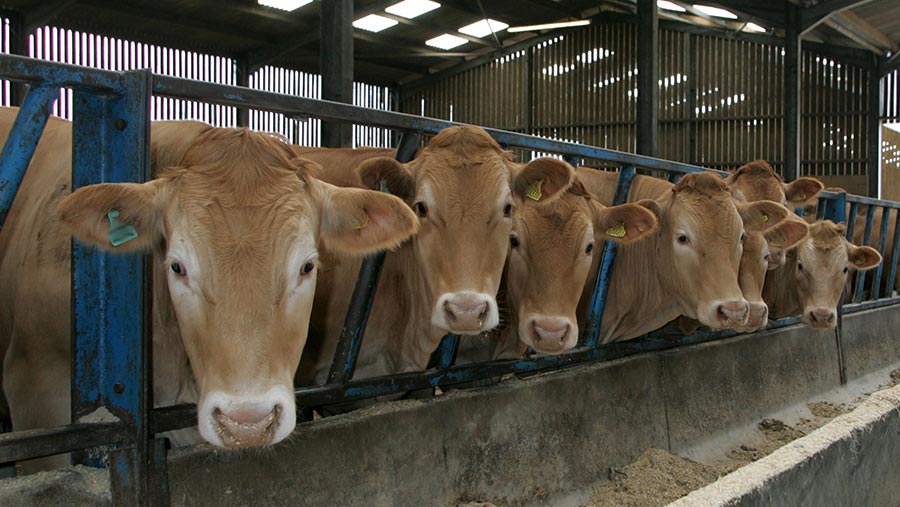Beef markets come under pressure from cheaper imports
 © Tim Scrivener
© Tim Scrivener Beef prices have fallen about 15p/kg since reaching record highs in May, but trade remains strong compared with previous years.
GB deadweight steers averaged 477.6p/kg overall for the week ending 1 July, while heifers averaged 475.3p/kg and young bulls averaged 472.3p/kg.
Auctioneers also reported a slight dip in demand at auction marts, with prime cattle falling by 5p/kg on the week to 263p/kg liveweight for the week ending 4 July.
See also: Scots spending more on red meat with sector valued at £926m
The premium has widened for GB prices compared with deadweight beef prices on the Continent, despite a tightening of supply in the EU.
EU deadweight beef prices averaged €4.94/kg deadweight (423p/kg deadweight) for the week ending 25 June, according to the EU Commission. This, linked with a stronger sterling, is making imported beef from countries such as Ireland more competitive.
Slightly higher volumes of beef imports have also started to arrive from Australia since the introduction of the free-trade agreement.
Scottish market
In Scotland, prime cattle prices have dropped 3% after peaking at 511.8p/kg deadweight in the week ending 20 May, according to Quality Meat Scotland (QMS).
Iain Macdonald, QMS market intelligence manager, said competition between processors for cattle has softened due to demand-side pressures, with some of the lower-value parts of the carcass becoming more challenging to sell into the food manufacturing sector.
“Cow prices are a good indicator of the manufacturing beef trade and they have also fallen by about 2-3% from their May peak, at a time of year when prices tend to stabilise around their seasonal highs, with slaughter volumes well below their annual peak,” he added.
QMS has forecast prime cattle availability will remain below 2022 levels in Scotland during the second half of the year.
Overall, AHDB forecasts UK prime cattle kill will decline by 1% in 2023 to total 2.04 million head.
Liveweight v deadweight
The Ulster Farmers’ Union (UFU) said beef prices being achieved in the live ring were providing better returns than those being paid by processors.
UFU beef and lamb chairman Pat McKay said the return farmers have been getting from abattoirs for beef dropped significantly in May and has been gradually declining ever since.
“In comparison, selling cattle in the ring is not reflecting the price that processors are giving. Good-quality liveweights are selling well and most farmers are content with the return. I urge farmers to consider selling cattle in the live ring to gain a better return,” he said.
Mr McKay added that it was not an option available to all beef producers, with finishers closed due to TB being forced to take lower prices.
“This is totally unjust and unacceptable. The viability of these closed beef farms is more dependent than ever on market returns, and factories can and must do more to ensure beef prices reflect the costs farmers have incurred to finish cattle in sheds.”
